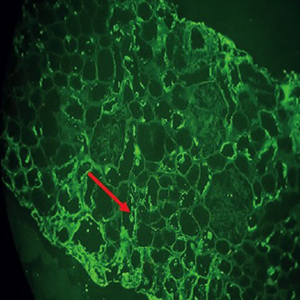Delayed diagnosis of plasma cell disorder related Fanconi syndrome in young adults presenting as osteomalacia: report of two cases with normokalemia and normal haematological parameters at the time of presentation

All claims expressed in this article are solely those of the authors and do not necessarily represent those of their affiliated organizations, or those of the publisher, the editors and the reviewers. Any product that may be evaluated in this article or claim that may be made by its manufacturer is not guaranteed or endorsed by the publisher.
Authors
Adult-onset hypophosphatemic osteomalacia is rare and diagnosis is frequently delayed. Fanconi syndrome (FS) due to monoclonal gammopathy is a well-recognized, but rare cause of hypophosphatemia. The relatively young age of patients and normal routine hematological parameters often results in late recognition of this treatable disease entity. Low phosphorus, elevated alkaline phosphatase, mildly impaired renal function and hypokalemia are often the only abnormalities on routine evaluation. We summarize the clinico-pathological features of two cases who initially presented with fractures and proximal myopathy and were subsequently found to have FS secondary to light chain proximal tubulopathy. Atypical features like absence of hypokalemia at presentation and elevated fibroblast growth factor 23 (FGF 23), a marker of oncogenic osteomalacia were noted. Marked clinical improvement and recovery of renal parameters were evident with phosphate supplements and chemotherapy for the plasma cell disorder. FS due to monoclonal gammopathy may present with atypical features and diagnosis may be challenging.
How to Cite

This work is licensed under a Creative Commons Attribution-NonCommercial 4.0 International License.
PAGEPress has chosen to apply the Creative Commons Attribution NonCommercial 4.0 International License (CC BY-NC 4.0) to all manuscripts to be published.






